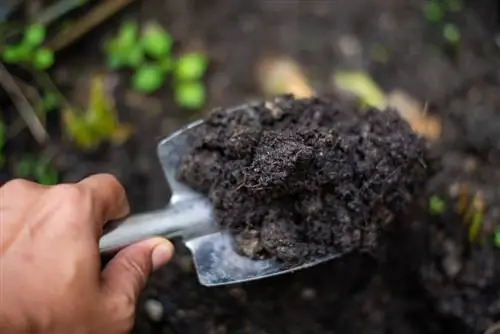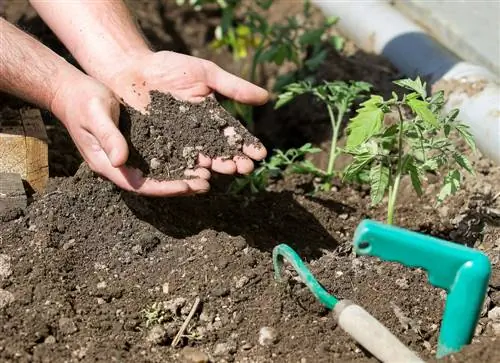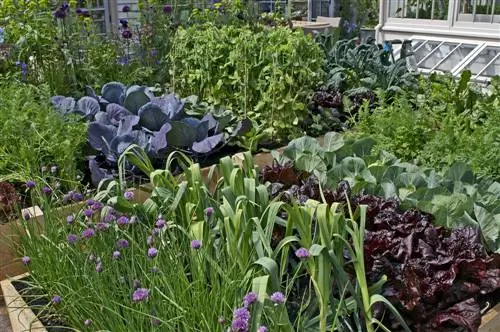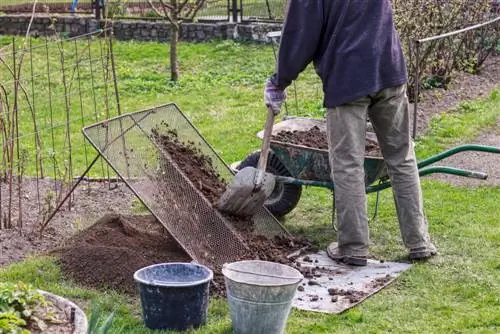- Author admin [email protected].
- Public 2023-12-16 16:46.
- Last modified 2025-01-23 11:21.
The foundation of every vegetable patch has already been created by nature: the soil in which your own tasty vegetables will thrive in the future. Regardless of whether your garden has sandy or clayey soil, you should pay the most attention to the topmost thirty centimeters. This is the humus or topsoil layer, the nutrient reservoir for your vegetable plants.

How can I improve the soil in my vegetable patch?
To improve the soil in the vegetable bed, you should add compost, sand and stone powder or clay powder. These materials loosen up and are rich in nutrients, improve water and nutrient retention and ensure ideal conditions in the vegetable patch.
Methods to improve the substrate
For growing vegetables, the soil should have the following properties:
- easy and humorous
- nutrient-rich
- slightly sandy
- water permeable.
Compost is the best way to improve the soil. The organic matter binds coarse sand grains and loosens the clay particles of heavy soils that stick together.
These can also be loosened with sand. You should incorporate around two buckets per square meter when creating the vegetable bed. Applied stone dust (€16.00 on Amazon) also counteracts soil compaction.
For sandy soils, use clay powder. It improves soil structure and increases nutrient capacity. Since the clay materials swell when wet, the water is better retained in the soil.
Tip
If you need more compost than you can produce yourself, you can get this valuable material at many recycling centers, garbage dumps or composting plants. Largely free of peat and regionally produced, this “waste product” is ideal for improving the soil in the vegetable patch.






